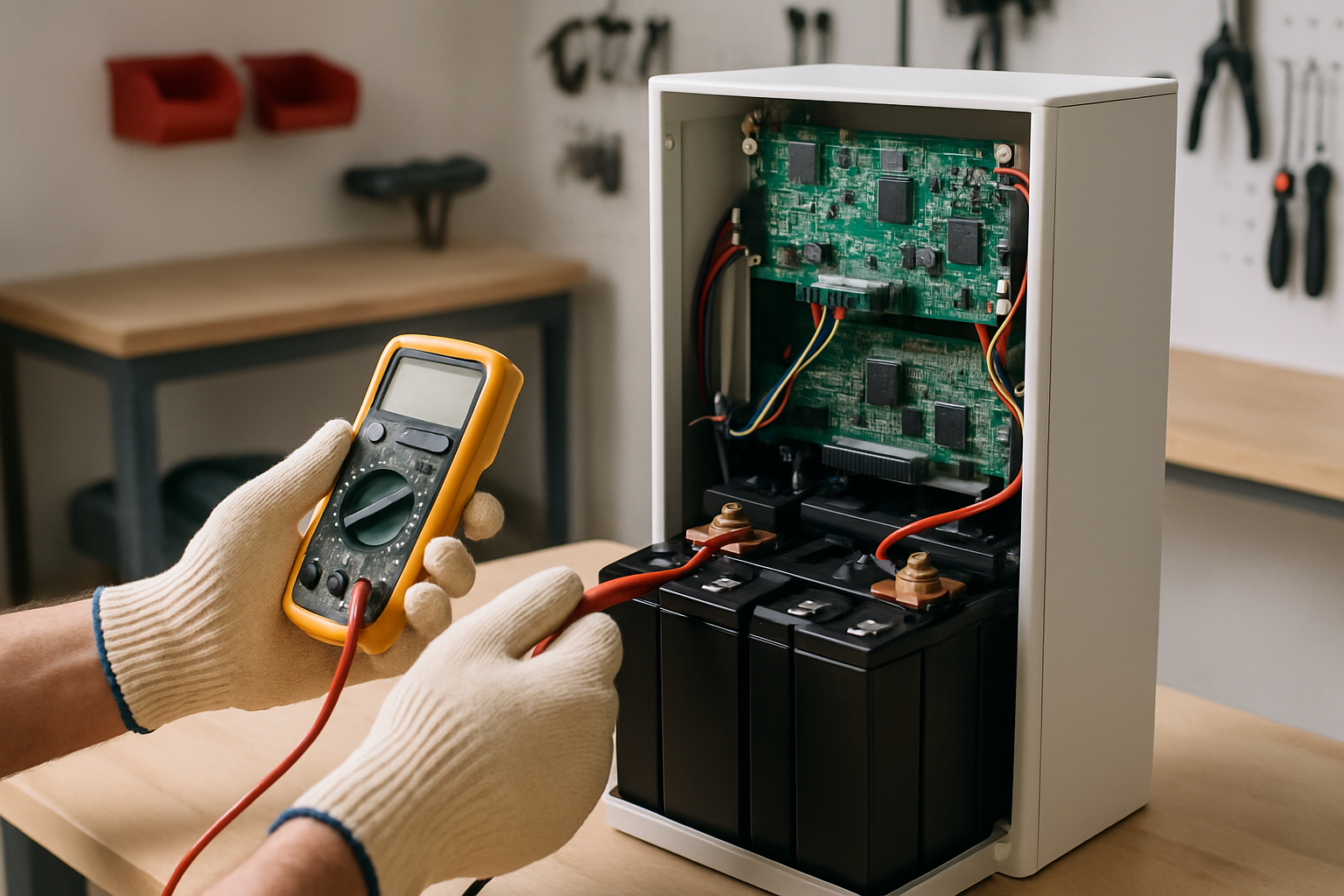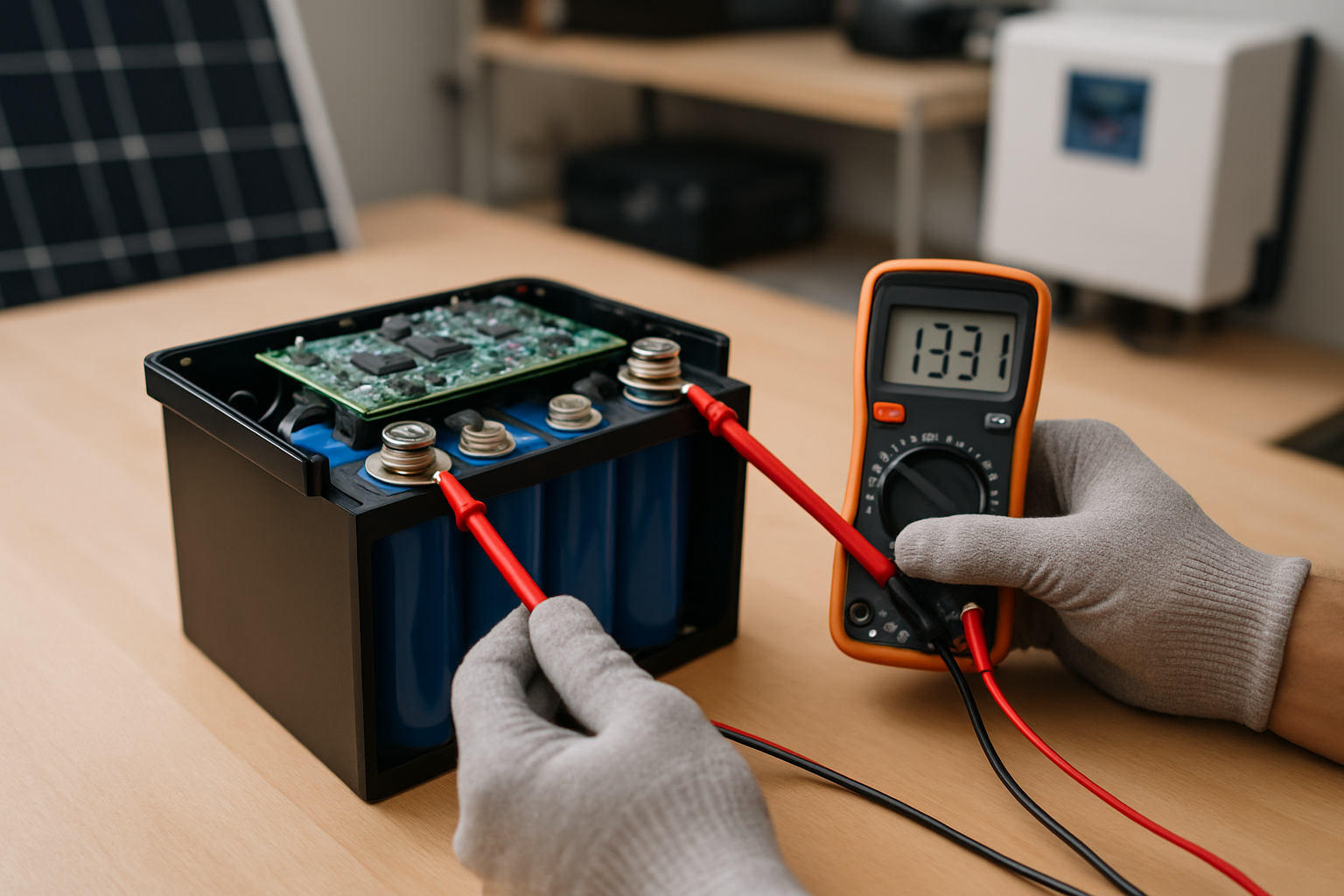When your solar energy storage system suddenly shuts down, it's easy to assume a major failure. But often, the culprit is the Battery Management System (BMS) doing exactly what it's designed to do: protect your investment. A tripped BMS isn't a sign of a broken component; it's a critical safety feature signaling an underlying issue that needs attention. Understanding why these protection faults occur is the first step toward a more reliable and long-lasting energy storage solution.
The Guardian of Your Battery: What is a BMS?
Think of the BMS as the brain of your battery pack. This sophisticated electronic system monitors and manages the health of every individual cell, ensuring safe and efficient operation. For LiFePO4 (lithium iron phosphate) batteries, which are prized for their safety and longevity in home energy storage, a BMS is indispensable.
Core Functions of a BMS
A BMS continuously tracks key operational parameters. It measures cell voltage, current flow during charging and discharging, and battery temperature. It also calculates the State of Charge (SoC), so you always know how much energy is available. By keeping all cells operating within their safe limits, the BMS optimizes performance and extends the battery's lifespan.
Why Protection is Crucial for LiFePO4 Batteries
While LiFePO4 chemistry is inherently stable, it's not immune to damage from electrical or thermal stress. The primary role of the BMS is to prevent conditions that could lead to irreversible damage or safety hazards. It acts as a vigilant watchdog, disconnecting the battery to prevent events like over-charging, deep discharging, or overheating, which could otherwise lead to thermal runaway.
Decoding the Shutdown: Common BMS Protection Faults
When your BMS trips, it's reacting to a specific fault condition. Identifying the cause is crucial for troubleshooting the issue and preventing it from happening again. Here are the four most common protection faults.
Over-Voltage Protection (OVP)
Over-Voltage Protection is triggered when the voltage of any single cell exceeds a predefined safe limit during charging. This is a critical safety function, as prolonged over-voltage can lead to permanent capacity loss and damage the battery's internal structure.
- Common Causes: An incorrectly configured solar charge controller or inverter, a faulty charger, or excessively high regenerative braking voltage in mobile applications.
- How to Identify: The system shuts down during the final stages of charging. A multimeter reading of the battery pack will show a voltage at or above its fully charged specification.
Under-Voltage Protection (UVP)
Under-Voltage Protection activates when a cell's voltage drops below its minimum safe level during discharge. Allowing a LiFePO4 battery to be too deeply discharged can cause irreversible damage, significantly shortening its lifespan. The BMS disconnects the load to prevent this 'deep discharge' state.
- Common Causes: Exceeding the battery's capacity by running heavy loads for too long, parasitic drains from idle equipment, or leaving the system on without a charging source.
- How to Identify: The system shuts down while under load, especially when powering large appliances. The battery voltage will read very low.
Over-Current Protection (OCP)
Over-Current Protection trips when the current drawn from the battery exceeds its maximum safe discharge rating. This can happen from a short circuit or from a device that requires a very high initial surge of power to start, like a motor or pump.
- Common Causes: A short circuit in the wiring, faulty appliances, or the inrush current from large motors, air conditioners, or pumps exceeding the BMS's limits.
- How to Identify: The system shuts down instantly when a specific high-power appliance is turned on. According to some analyses, this is a common reason for a BMS to trip.
Temperature Protection (OTP/UTP)
Batteries operate best within a specific temperature range. The BMS monitors this with thermal sensors and will trigger protection if the temperature gets too high (Over-Temperature Protection) or too low (Under-Temperature Protection). High temperatures accelerate degradation, while charging below freezing can cause permanent damage due to lithium plating.
- Common Causes: High ambient temperatures, poor ventilation around the battery bank, or attempting to charge the battery in freezing conditions.
- How to Identify: The system is operating in an extremely hot or cold environment. The battery casing may feel hot to the touch.
The Investigation: How to Troubleshoot a Tripped BMS
Once your BMS has tripped, a systematic approach can help you identify and resolve the root cause. A BMS fault is a signal to investigate, not just to reset.
Initial Safety Checks
Before doing anything else, ensure the system is safe. Disconnect all loads from the battery and turn off all charging sources, including solar panels and grid chargers. This isolates the battery and prevents any further issues while you troubleshoot.
Identifying the Fault
Use a quality multimeter to measure the battery pack's total voltage. If the voltage is very high, it points to an OVP event. If it's very low, UVP is the likely culprit. If the voltage is normal, consider an OCP or temperature event. Check the error logs on your solar inverter or charge controller, as they often provide specific fault codes that can pinpoint the problem.
Proactive Measures: Preventing Future BMS Faults
The best way to deal with BMS protection faults is to prevent them from occurring in the first place. Proper system design and maintenance are key.
Correct System Sizing and Configuration
Ensure your battery bank, inverter, and solar array are properly matched. An undersized battery bank connected to a large inverter can easily trigger over-current or under-voltage faults. It is vital to understand the relationship between different components. For a comprehensive overview of how system components interact, you can consult this resource on solar storage performance metrics. Properly configuring the charge parameters in your solar controller to match your battery's specifications is also essential to prevent over-voltage.
Environmental Control
Install your battery energy storage system in a location with stable temperatures and adequate ventilation. Avoid direct sunlight and areas prone to extreme heat or freezing temperatures. Good airflow helps dissipate heat generated during charging and discharging, preventing over-temperature faults.
Regular Maintenance and Monitoring
Periodically inspect all wiring and connections to ensure they are tight and free of corrosion. Loose connections can cause voltage drops and erratic behavior. Regularly monitor your system's performance through its monitoring software. Keeping an eye on voltage and temperature trends can help you spot potential problems before they cause the BMS to trip. As the International Energy Agency notes in its Electricity Grids and Secure Energy Transitions report, modernizing infrastructure with better monitoring and control is key to reliability, a principle that applies equally to large grids and home energy systems.
Moving Forward with Confidence
A tripped BMS is a protective mechanism, not a failure. By understanding the common causes—over-voltage, under-voltage, over-current, and temperature extremes—you can diagnose the root of the problem. More importantly, by implementing proactive strategies like proper system design, environmental control, and regular maintenance, you can minimize these events. This ensures your solar energy storage system operates safely, reliably, and efficiently for years to come, empowering your journey toward energy independence.
Frequently Asked Questions
Can a BMS trip for no reason?
It's very rare for a BMS to trip without a valid reason. A fault usually indicates an underlying issue with the battery, the load, or the charging source. If you suspect a faulty BMS, it's best to consult the manufacturer after ruling out all other potential causes, such as loose wiring or incorrect settings.
Will a tripped BMS damage my battery?
No, quite the opposite. The BMS trips to *prevent* damage to the battery. By disconnecting the cells before they are exposed to harmful conditions like extreme voltage or temperature, the BMS actively preserves the battery's health and extends its lifespan.
How do I know which specific fault triggered the BMS?
The best way is to use a multimeter to check the battery's voltage immediately after a shutdown. A very high or very low voltage points directly to over- or under-voltage protection. For other faults, check the error logs in your inverter or charge controller. Some advanced 'smart' BMS units also offer Bluetooth connectivity, allowing you to view detailed fault logs directly on a smartphone app.





Leave a comment
All comments are moderated before being published.
This site is protected by hCaptcha and the hCaptcha Privacy Policy and Terms of Service apply.